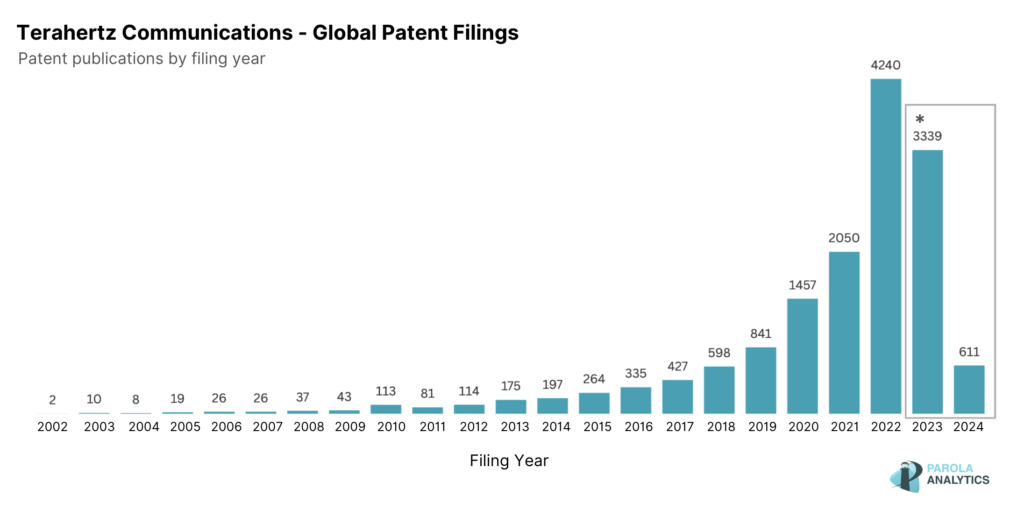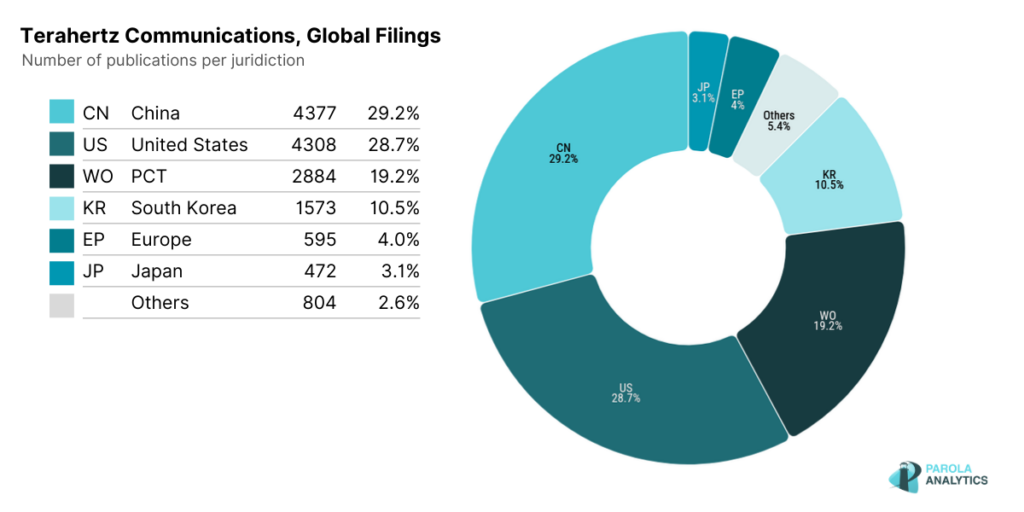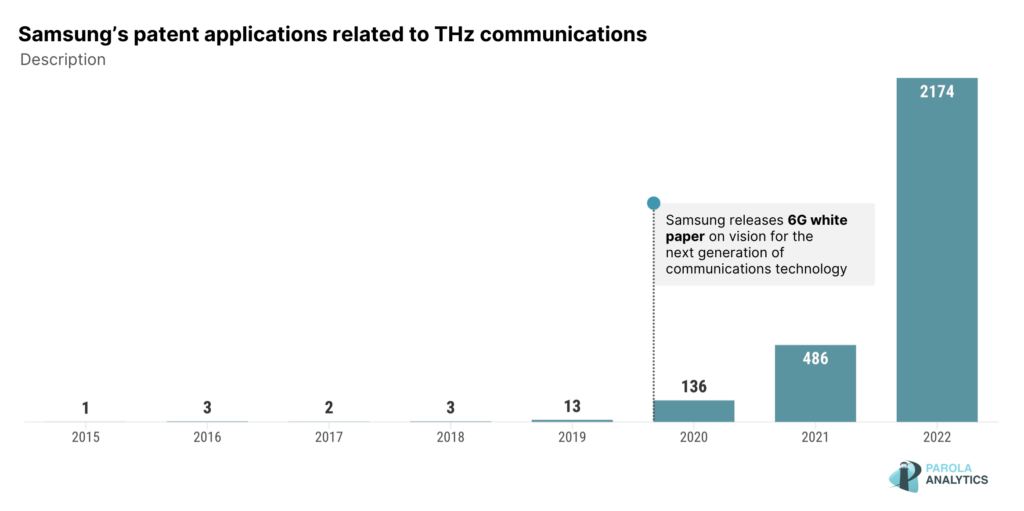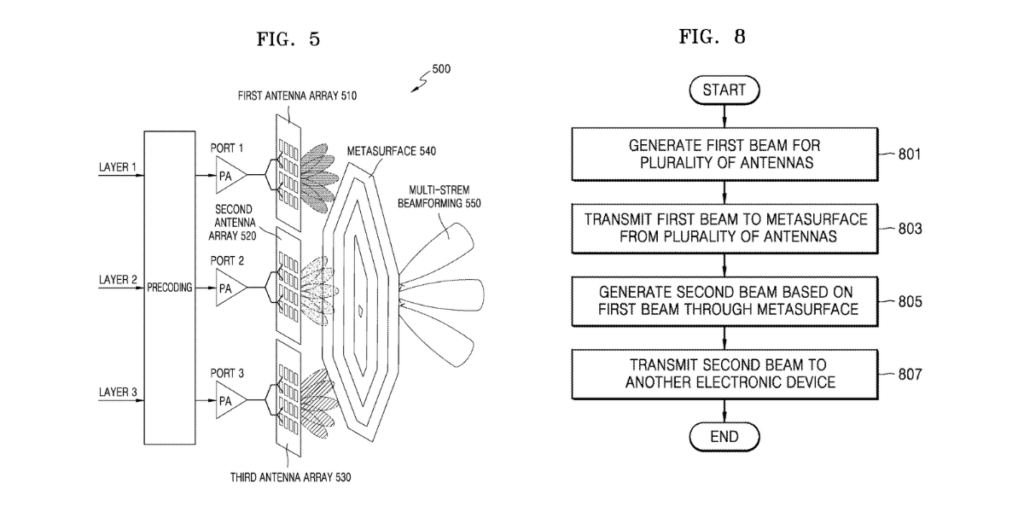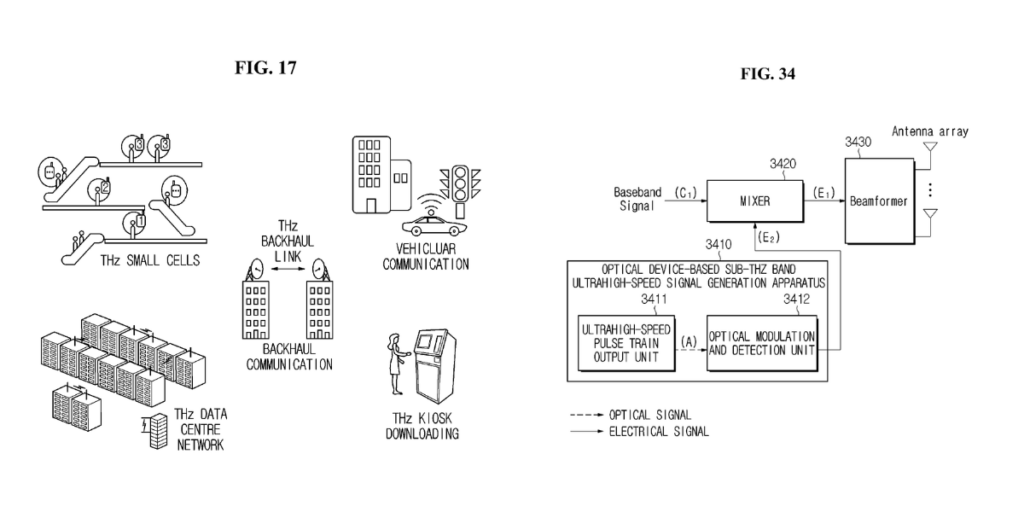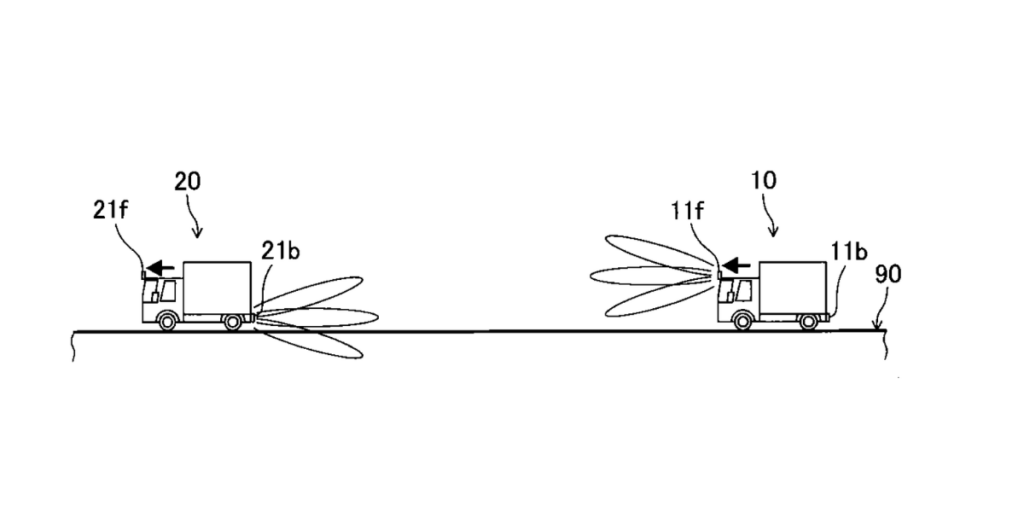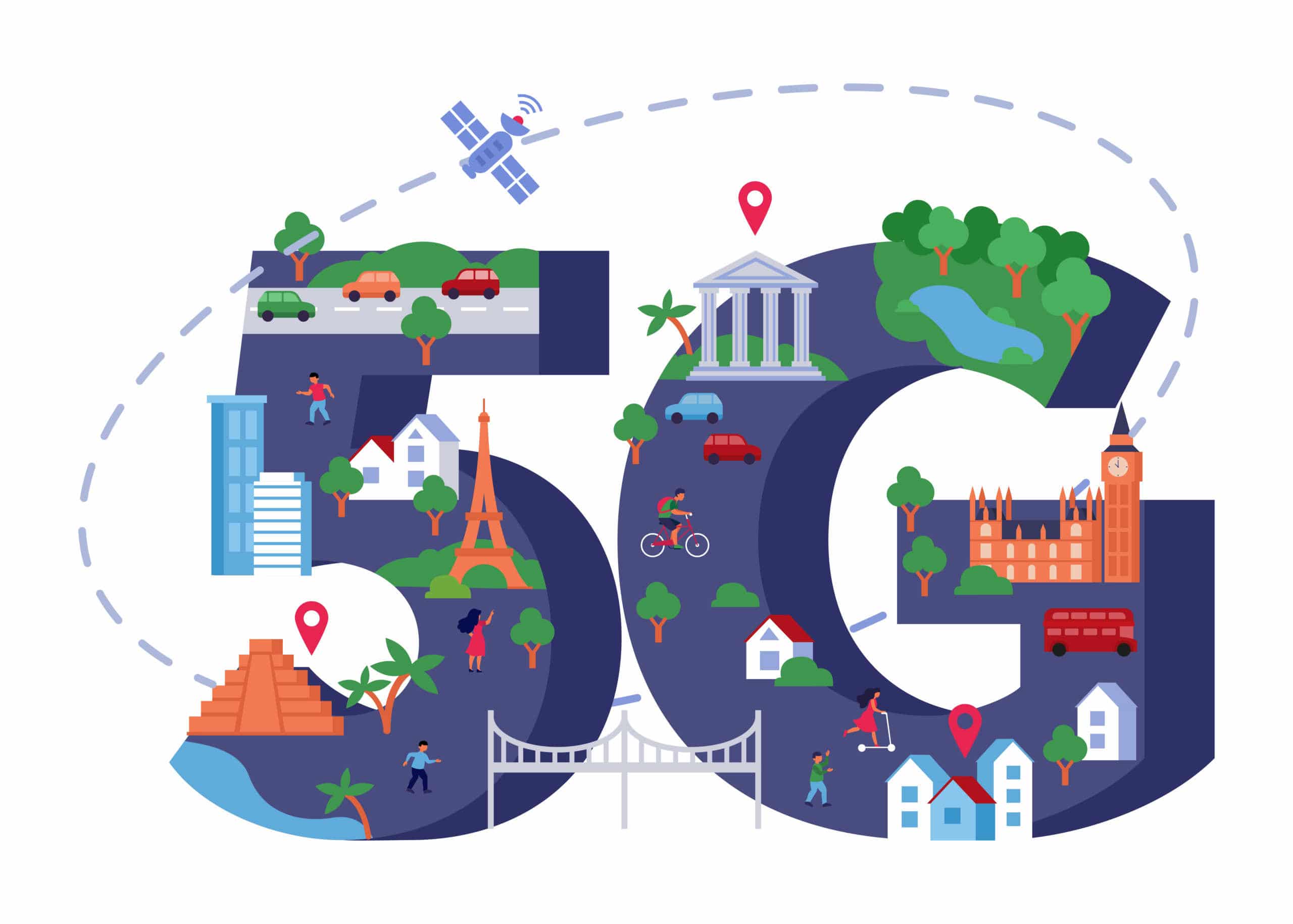As 5G networks continue their global deployment, the technology landscape is already preparing to transition to 6G. While 5G has undoubtedly transformed industries with enhanced mobile broadband and ultra-low latency, it still needs to address the growing demands for higher data rates and seamless connectivity. This is where terahertz (THz) technology comes into focus as one of the key enablers of 6G communications. By leveraging the ultra-high frequencies of the terahertz spectrum, 6G is expected to deliver unprecedented data transfer rates and network performance, paving the way for the next generation of communication technology.
This article reviews some of the advancements in THz technology, focusing on their potential use in 6G networks which are expected to be commercially deployed by 2030. Additionally, we will analyze the patenting activities of some of the major players in THz communications.
What is terahertz radiation?
Terahertz (THz) radiation, or submillimeter wave, occupies a frequency band in the electromagnetic spectrum ranging from 0.1 to 10 THz. This band has seen growing interest due to numerous applications, particularly in the fields of imaging, security, and nondestructive testing (NDT). However, the most significant development lies in its recognition by academia and industry as a key enabler for the next generation of telecommunications.
Terahertz (and sub-THz) bands are considered pivotal for 6G communications because they offer remarkable bandwidth, enabling faster data rates and lower latency compared to current technologies. These frequencies also provide better spatial resolution, which is essential for real-time applications. Ongoing research is focused on developing efficient antenna systems to address current technological limitations, such as reducing signal attenuation.
In March 2019, the U.S. Federal Communications Commission (FCC) created a new category of experimental licenses for frequencies between 95 GHz and 3 THz. These licenses, which last up to 10 years, give innovators the flexibility to conduct experimental tests and develop new communication technologies and services during the experimental period.
This renewed focus on terahertz technology has driven a surge in research publications and patent applications. Gathered data from global I.P. offices reveal a 340% increase in patent applications related to terahertz communications between 2018 and 2022.
Fig. 1: Data shows a steady increase in patenting activities for innovations related to terahertz communications.
Data also indicate that the majority of the patent grants and applications are under the jurisdiction of the China National Intellectual Property Administration (29.2%) and the U.S. Patent and Trademark Office (28.7%), denoting a significant share of the global patent landscape. Meanwhile, 19.2% of patent applications were filed under the Patent Cooperation Treaty (PCT).
The strategic focus of U.S. and China in advancing 6G infrastructure is evident through substantial R&D investments and the utilization of subsidies and tax incentives to strengthen domestic equipment manufacturing. In addition to these efforts, both nations are fostering collaborations between government agencies, private sector giants, and academic institutions to accelerate innovation in 6G technology.
Fig 2: China and US hold the majority of global patent grants and applications.
Similarly, South Korea and Japan are also among the countries poised to become global leaders in 6G, mainly due to the strong presence of industry leaders such as Samsung, LG, NEC, Fujitsu, and NTT. These companies drive technological advancements and play a pivotal role in setting global standards, securing patents, and establishing early partnerships for 6G deployment.
Meanwhile, analysis of key players in the field shows that the top 10 assignees in terms of family count hold a combined share of about 48% of all active patent grants or applications related to THz communications. The top assignees for the technology domain include tech giants Samsung, LG, Apple, Intel, and Huawei.
Fig. 3: The top 10 assignees were identified based on the family count containing active patent/patent applications.
Samsung leads in innovations related to THz wireless communication
Samsung is currently the leading innovator in terahertz communications based on the number of patent applications. The company’s patenting activity shows dramatic increases in their patent applications in 2021 and 2022 following the release of their whitepaper in 2020. This whitepaper identified terahertz as a key candidate technology for 6G development. According to the report, the THz band offers an enormous amount of available bandwidth, which could help achieve Tbps data rates. THz frequencies also provide high-precision positioning and accurate ranging between transmitters and receivers which can potentially lead to sub-centimeter accuracies.
Fig. 4: Samsung ramps up its patenting activity after identifying terahertz as 6G key technology in a 2020 white paper.
Samsung is particularly invested in developing phased arrays and reconfigurable intelligent surfaces (RIS) for beamforming and beam steering. One of their granted patents (U.S. Patent No. 11,070,269) details a 6G communications system that utilizes a surface with metamaterials—micro- or nanoscaled structures engineered to manipulate electromagnetic waves—for beamforming capabilities.
Fig. 5: U.S. Patent No. 11,070,269 describes the use of metasurfaces to perform beamforming and beam steering in a 6G wireless communication system.
U.S. Patent No. 11,070,269 aims to address issues on signal attenuation and path loss in terahertz bands while increasing the range for signal reception. They achieve this by utilizing a beamforming scheme using multiple antenna elements with a metasurface module as replacement for the conventional signal processing components of typical beamforming schemes. In their design, an antenna array first generates and transmits a beam to a metasurface module. The module can then accept and re-transmit this beam to another electronic device in any direction. Using a metasurface reduces power consumption compared to usual signal processing components in beamforming and beam steering. The patent was filed on July 30, 2020, and granted on July 20, 2021.
The company’s research on THz antenna systems resulted in a working prototype presented during a Terahertz communications workshop at the IEEE International Conference on Communications (ICC 2021). The prototype system, which was developed in collaboration with the University of California Santa Barbara, featured a 140 GHz phased array transmitter and receiver modules capable of processing signals with 2 GHz bandwidth and fast adaptive beamforming. The system achieved a 6.2 Gbps throughput over 15 meters, demonstrating effective beam steering at THz frequencies.
LG’s patented sub-THz device transmits 6G data over 500 meters
LG is another major player in the development of 6G communication systems. In September 2023, LG and the Korea Advanced Institute of Science and Technology (KAIST) demonstrated record-breaking wireless transmission and reception of 6G terahertz data, covering a distance of 500 meters. This achievement marks a significant milestone toward 6G commercialization as it tested various communication scenarios in urban environments. Their system is further detailed in U.S. Patent No. 11,032,009. The disclosed technology can generate and transmit sub-THz band signals using an optical device.
Their device features an ultrahigh-speed pulse train output that can be generated using a laser. This pulse train passes through an optical modulation and detection unit, which converts it into a sub-THz band electrical signal. A baseband signal carrying data is combined with the sub-THz signal via a mixer. Finally, the combined signals are then sent to a beamformer, where the signal is wirelessly transmitted through an antenna array. The beamformer ensures that the signal is transmitted in a targeted direction.
Fig. 6: LG’s patent discloses using an ultrahigh-speed optical pulse train to generate sub-THz signals.
The patent also enumerated several use cases of the wireless communication system, including radio access technology, vehicular communications, extended reality, Internet of Things (IoT) devices, and artificial intelligence servers.
U.S. Patent No. 11,032,009 was filed on July 23, 2020, and was granted on June 8, 2021. It is currently assigned to LG Electronics and the Korea Advanced Institute of Science and Technology (KAIST).
This progress builds on LG’s earlier tests in Berlin and is part of their ongoing research, initiated in 2020, to achieve ultra-fast data transmission with minimal latency using terahertz frequencies.
SoftBank announces successful field trial of patent application on 6G vehicular communications
SoftBank tested their design for a 6G antenna system in June 2024 to confirm its viability for outdoor vehicular communication. The field trial occurred near SoftBank’s headquarters in Minato-ku, Tokyo, where a base station transmitted a 5G modulation signal converted to 300 GHz. Tests were carried out as the vehicle traveled at varying speeds, up to a maximum of 30 km/h. Stable reception and demodulation of the test signal were achieved throughout a 140-meter stretch from the base station to the end of the road, even while the vehicle was in motion.
Their antenna system is disclosed in patent application JP2024080868A. The antenna is designed to improve vehicle-to-vehicle or vehicle-to-terminal communication by addressing the issue of decreased signal strength when transmitters and receivers are positioned at different heights. This was achieved by utilizing a radiation pattern called a cosecant square beam.
Typically, an antenna’s signal strength is strongest along the horizontal plane and is weak in other directions. This poses a challenge when the transmitting and receiving antennas are at different heights. In such cases, the transmission signal is angled downwards, resulting in poor signal reception especially as the horizontal distance between antennas varies, such as with moving vehicles.
Softbank’s innovation addresses this by replacing traditional radiation patterns with a cosecant square beam, a technology which was designed for air surveillance radars. This approach enhances signal strength along the vertical plane without physically adjusting the antenna’s beam direction.
Fig. 7: SoftBank’s invention improves the vertical directivity of antennas for use in 6G vehicular communications.
The solution involves arranging multiple antenna units in an array and fine-tuning each unit’s amplitude and phase weights according to the downward angle. The weights are calculated so that the gain at the downward angle follows a formula based on the square of the cosecant of the angle. This method also suppresses interference from reflected waves from road surfaces, ensuring consistent signal strength even as the distance between vehicles changes during inter-vehicle communication.
SoftBank’s patent application was filed on December 5, 2022, pending the Japan Patent Office (JPO) approval.
How standard-setting organizations are paving the way for 6G development
As the industry begins to recognize the transformative potential of THz technology for next-gen communications, the role of standard-setting organizations (SSOs) will be increasingly important. In April 2024, the European Telecommunications Standards Institute (ETSI) released reports on THz communication following the formation of its Terahertz Industry Specifications Group (ISG THz). These reports focus on pre-standardization efforts, exploring various use cases, identifying key frequency bands, and discussing spectrum allocation.
Additionally, in November 2023, the International Telecommunication Union – Radiocommunications Sector (ITU-R) issued a recommendation officially designating the next generation of IMT (“6G”) as “IMT-2030.” This document highlights THz technology as a crucial enabler for new applications and outlines the timeline for global IMT-2030 development. ITU is the UN’s specialized agency for information and communications technologies (ICT) and has played a pivotal role in defining global standards for 3G (IMT-2000), 4G (IMT-Advanced), and 5G (IMT-2020).
Looking forward, we can anticipate a growing range of technologies and applications for 6G networks driven by the collaborative efforts of industry leaders, standard-setting organizations (SSOs), and the broader research community. These developments will open unprecedented opportunities in fields such as immersive virtual reality, advanced robotics, and smart cities, pushing the boundaries of what’s possible in communication and connectivity. The successful realization of these innovations will heavily depend on global collaboration, unlocking the full potential of terahertz technology and the future of wireless communication.

